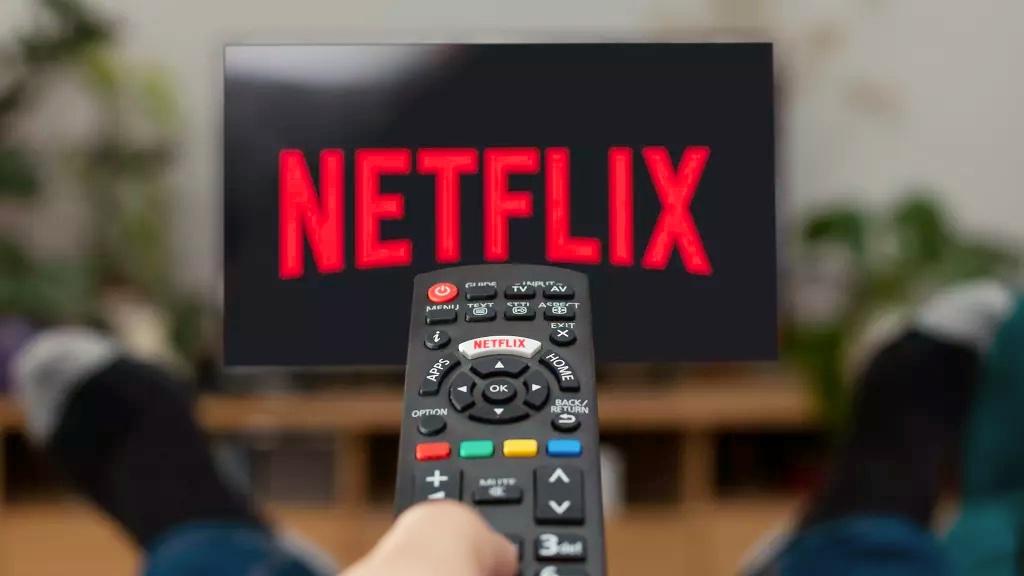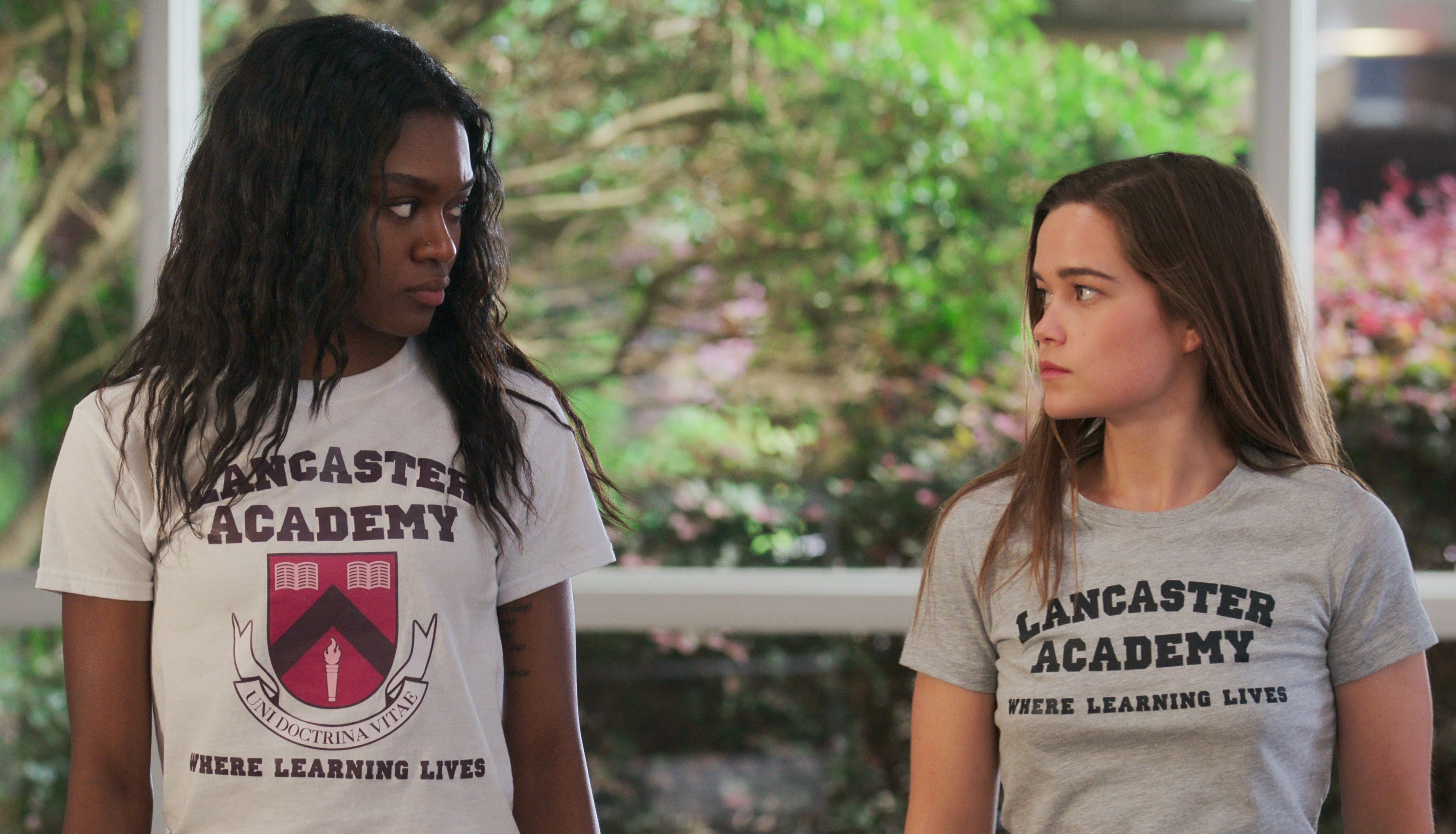Netflix keeps canceling popular shows — and it's your fault
Did Netflix canceled your favorite show because you were watching too slowly?

Netflix cancels a lot of shows. Like a whole lot of shows. The list of Netflix shows canceled of the last year alone is pretty sizeable, and the streamer wasted no time before brandishing its cancelation axe once again when it confirmed that mystery-thriller series 1899 is done after 10 episodes just days into the new year.
It’s an issue that has personally frustrated for me quite a while. And based on the other reactions I've seen to 1899 being the first canceled Netflix show of 2023 I’m far from the only subscriber that is getting fed up with the streamer’s trigger-happy approach.
Making matters worse is that Netflix typically hides its rationale for canceling shows. For example, 1899 made the No.1 spot, and racked up close to 80 million viewing hours in its first week. That appeared to be more than enough to guarantee a second season. I’ve often wondered what does it actually take to be considered a success by Netflix?
On the surface Netflix certainly appears to cancel shows indiscriminately regardless of their performance or critical reception. However, an interesting theory has resurfaced online this week which suggests there may actually be a method to Netflix’s seeming madness. And your favorite show being axed could actually be your fault...
We’re thinking about Netflix cancelations all wrong
Netflix's Top10 page tracks viewing hours on the streaming platform week-to-week. And looking at the raw data it can be hard to understand why 1899 got canceled.
As noted, it pulled 79 million viewing hours in its first week and a further 87 million in its second. Granted, it dropped quite significantly in its third week but did still clock up another 44 million viewing hours — how is that not enough for Netflix?

The answer may lie in a different metric entirely: Completion rates. In case the name doesn’t give it away, this means the percentage of Netflix accounts that began watching a show and then actually continue through all the available episodes. Essentially this can be boiled down to the number of viewers that Netflix can reasonably expect to watch the next season should it be made. After all, if you didn’t finish 1899 season 1, are you going to tune back in for season 2?
Get instant access to breaking news, the hottest reviews, great deals and helpful tips.
Using data from U.K.-based analytics company Digital i (via Whats On Netflix), it appears that 1899 had a very steep drop off, especially between episode 1 and episode 2. The data-tracking company suggests that only around 32% of Netflix accounts that started the show actually followed through and finished the season. That pictures a pretty gloomy picture for a potential 1899 season 2.
Another great example of a canceled show that appeared to start strong that has a low completion rate is First Kill. According to Digital i (again via Whats on Netflix) this steamy teen vampire series had a 66% drop-off between its first and second episodes and only 43% of viewers actually committed to watching it through to its cliffhanger conclusion. With that sort of completion rate is it really any surprise that Netflix opted to cancel First Kill just weeks after it premiered?

I should caveat the above data with the acknowledgment that Digital i is a third-party company and Netflix has never publicly released completion rate information for any of its shows. But even if these numbers aren’t wholly accurate, the idea that completion rates are dictating whether or not a show survives cancelation appears to hold quite a lot of water.
More than just a wild theory
The above shouldn’t just be dismissed as a unsubstantiated theory either. Not only is it logical, but Neil Gaiman, author of the graphic novels upon which the Netflix fantasy series Sandman is based, gave this theory extra credence last summer during the prolonged period where the fate of Sandman season 2 seemed to be in the balance.
When a viewer tweeted that they were enjoying watching the series with their spouse at a slower pace, Gaiman replied that he hoped they could “finish it within the requisite 28 or 30 days.” Strongly implying that the show’s first month completion rate was an important metric for Netflix.
I hope you can finish it within the requisite 28 or 30 days.August 27, 2022
Gaiman doubled down on this by also encouraging viewers to tell their friends who had “begun to watch but got distracted by life to finish watching Sandman.” He also advised that viewers should “try to finish watching all of it before Friday [Sept. 2, 2022].”
And if all that wasn't enough evidence for you, Gaiman spelt things out further when a fan asked if the show would look "more popular if we binge-watch it all at once" saying, "It does, yes. Because they are looking at "completion rates". So people watching it at their own pace don't show up."
It does, yes. Because they are looking at "completion rates". So people watching it at their own pace don't show up. https://t.co/62kdhvHoICAugust 21, 2022
This all very clearly suggests that Sandman’s completion rate in its first 30 days was paramount to its chances of getting renewed for a further season. And Gaiman himself admitted in September 2021 the shows chance of renewal were "complicated by a lot of people not binge-watching it, but spreading it out." Fortunately for fans, in this case the story did have a happy ending. Sandman did eventually get picked up for a second season.
Gaiman is not the only well-placed source to reveal that viewership numbers in the first month is of significant importance to the streamer. Michael Green, a screenwriter and producer who has worked with Netflix, posted on Twitter earlier this month that "the only way to keep a show on the air at Netflix is to rack up hours viewed in THE FIRST MONTH from its release."
PSA:The only way to keep a show on the air at Netflix is to rack up hours viewed in THE FIRST MONTH from its release.So if you love a show, play its episodes through within that timeframe, ideally multiple times and on multiple devices.January 7, 2023
Green also explained that Netflix is not shy about this fact saying "they are very open about the first month as their key metric." The producer also noted that after the first 30 days Netflix bosses "weigh hours viewed in that period against the budget of the show and then do the Devil's math of "was it worth it."" With this taken into consideration, Green's advice to watch the shows you like right away is pretty salient.
Netflix’s binge model could be to blame
So if we accept that a show’s completion rate, particularly in its first 30 days on Netflix, is a critical metric, then the next question has to be, why are some shows getting such a low compilation rate?
The obvious answer would be a lack of interest from viewers perhaps because of an unengaging pilot episode, or perhaps poor word of mouth or a weak critical reception puts viewers off finishing. However, Netflix’s own release model could also be partially to blame for some shows’ suffering from low completion rates.

I have pretty mixed feelings about binge-watching in general. A lot of the time I feel it distracts from what makes the television format special, but there are a select few shows that I believe are enchanted by being consumed in rapid succession. But unlike its rivals such as Disney Plus and HBO Max which favor dropping new episodes weekly, Netflix pretty much universally drops whole seasons in one go.
This strategy could be causing viewers to burn out on a new series too quickly. After all, watching half a dozen episodes in a matter of days, sometimes even in just a single day, is probably enough to make anybody crave something different for a while.
Then you have subscribers such as myself who often self-regulate and consume shows over a matter of weeks, if not months. To Netflix, I’d be judged as somebody who wouldn’t be interested in more episodes just because I’ve not polished off the entire drop within the designated 30-day window.
Netflix isn’t giving shows a fair shot
The problem with only looking at a show’s first 30 days on the service when judging its success is that it doesn’t allow for a slow burn. Not to mention, it entirely discounts viewers who arrive on the scene a little later. Most shows, even beloved ones, start out with fewer viewers than they end with, and yet it almost seems like to Netflix if you don’t watch in the first 30 days your interest doesn’t really count.
Take the universally acclaimed AMC show Breaking Bad. When it premiered in January 2008 it pulled in around 1.41 million viewers for its pilot episode. But by the time the debut episode of its final run rolled around in 2013, it scored almost 6 million viewers. Even the best shows of all time need time to find their audience and grow in popularity.
if you want to see a Netflix show continue, make sure to finish it fast
Netflix is one of the best streaming services out there, and also the biggest worldwide, so despite all the criticism it's faced in recent months, it’s clearly doing something right. But at the same time its ever-growing list of canceled shows, many of them after just a single season, continues to sully its reputation with some viewers.
There is almost certainly a logical explanation for which shows Netflix choses to renew and which it opted to cancel, but that still doesn’t stop the persist problem from being a major frustration for thousands of subscribers. Going forward, just remember, if you want to see a Netflix show continue, make sure to finish it fast.

Rory is a Senior Entertainment Editor at Tom’s Guide based in the UK. He covers a wide range of topics but with a particular focus on gaming and streaming. When he’s not reviewing the latest games, searching for hidden gems on Netflix, or writing hot takes on new gaming hardware, TV shows and movies, he can be found attending music festivals and getting far too emotionally invested in his favorite football team.
